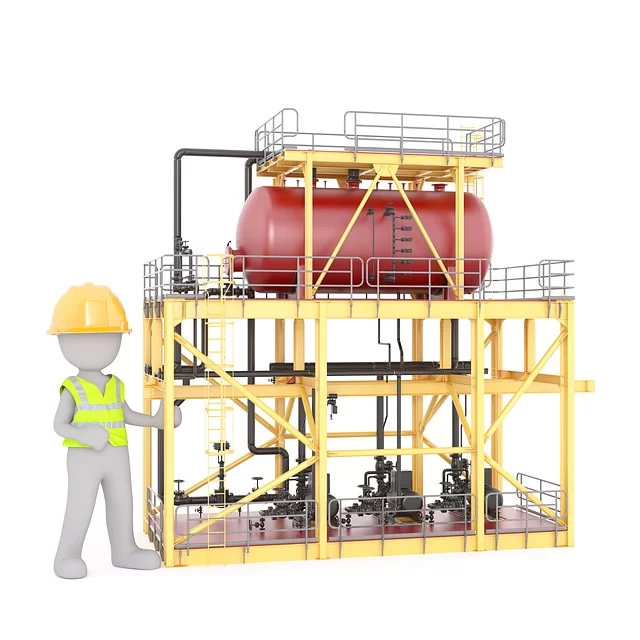Effective Change Management Systems

It’s important that we’re always open to new ideas and peoples thoughts on different approaches we might take to improve overall maintenance performance.
To ensure this, your site needs to have a change management system and the basis of this is a change management form. This form could either be in a word document format that have levels of approval or an online form with workflow approval process.
Another common requirement for change management is when a work request is submitted for improvement rather than maintenance. The work request must be paused while a change management form is processed and approved at various levels.
Any work intended to increase an asset’s performance in the areas of Health, Safety, Environment, Production, Cost reduction, Reliability, or Maintainability is considered improvement work and will need to be subject to the change management process.
Another example of a change management form is a request to switch from one manufacturer to another for an item of equipment or perhaps a spare part that is stocked in the warehouse; the change management process will ensure that this change is acceptable and will not have a negative impact on site performance.
Please keep in mind that uncontrolled change within your organization not only raises your risk profile and potentially puts your employees in danger, as well as the problems that may arise as a consequence, but it can also result in either rejected insurance claims or a significant increase in your monthly premiums if detected by your insurance company.
A far better situation for your company is to encourage people to come up with ideas that may require change, identify all ideas, assess risk, and at least partially process them. Once approved, some ideas and the resulting change management processes can be processed quickly, whereas others will necessitate lengthy change management processes and capital investment. The important thing is that no employee is discouraged from submitting any ideas they have that may require change within your company.
If your site does not have a change management form, don’t worry, in today’s article, we are going to step through all requirements for what should pass as a reasonable change management form.
What is a change management process?
Change management is the process of guiding a change from concept to completion. It ensures that all critical stages are followed, that the change is communicated throughout the organization, and that all considerations are brainstormed and implemented.
Typically there are around 6 steps associated with a change management process as follows:
1. Identify the need for the change
2. Develop or Identify a business case (the change may be either desired or required by law)
3. Thoroughly plan the change
4. Communicate the change (no surprises, everyone needs to be on the same page)
5. Monitor/Analyze the effectiveness of the change (was it worth it?, is it working well?)
6. Implement changes if required
Create a Change Management Form from scratch
Part 1 – The requestor identifies the change.
There should be a sufficiently large field for the requestor to describe the need for the change; I would recommend allowing at least 500 words in Part 1.
Part 2 – Is this change mandatory.
This part of the form would have a Yes or No response code.
This change may be legally required by policy or law, ranging from a local government/shire council requirement to a state regulation or a federal act of parliament.
If the change is mandatory, the requestor must attach all relevant paperwork to this form.
In this case, the requestor may not need to answer all of the form’s questions because they are simply formalizing the mandatory change requirement.
If not a mandatory change, the requestor will proceed as normal.
Part 3 – Is this change required due to a critical hazard that must be corrected?
Details of the hazard report form should be attached.
If the hazard was rated as having a critical high level of risk, your engineering team will need to get involved at this point to verify the ranking and investigate all options.
Part 4 – List all hazards or risks associated with the change
The associated risk assessment must be attached.
At this point, the change management request will be forwarded to the engineering team, and it is possible that the request will not progress further.
In a lot of cases, the engineers may ask of you to entertain a slight change to your request.
This section is critical if the requestor is proposing a change in metalliferous type, composition, or switching to a very expensive exotic alloy.
Part 5 – Provide some current situation analysis, what is happening now?
I would allow around for at least 300 words for this section.
If the requestor has information to support this section of the form, they should be encouraged to include it as an attachment.
Part 6 – What is the purpose of this change?
Another section where I would allow for at least 300 words
Part 7 – What will be the outcome of this change?
Allow 300 words for this section, which should include expected outcomes, such as high level summary about what the positive effects of this change would be and a detailed list of the various benefits and who would benefit from them.
Part 8 – Who are the stakeholders with regards to this change?
Allow for around 150 words for this section, provide a list of all stakeholders and why they would be associated with the change. Be sure to list how this change will impact them.
Part 9 – What alternatives are there?
Allow for around 200 words for this section, it’s important that the requestor did some research on this subject prior to submitting this form. It’s not to discourage people from completing this form, it’s just that there may already be something on the market that does exactly what the requestor is proposing.
Approvers of this form may be less than happy if you end up imposing the necessary research time upon them rather than yourself in order to thoroughly investigate the worthiness of this form.
If you don’t do your homework and the approvers discover that there is already a locally sourced solution for your request, you may receive negative feedback. Aside from the fact that your request will be rejected, you may receive some communication emphasizing the importance of being vigilant and detailed when requesting change.
Part 10 – Provide Risk Assessment details associated with this request.
In this section, all associated risk assessment participants and their roles needs to be listed as well as any identified hazards or issues that may be introduced or modified (hopefully improved) by the change and how any changes may be controlled or ensured.
There would be a few columns in this section, working from left to right, it would include (1) Hazard/Issue, (2) Control Measure, (3) Residual Risk
Please keep in mind that this section can be quite lengthy at times, so make sure to leave enough space.
Part 11 – Identify the actions required to implement the change
This is another section of the form that can become quite lengthy; encourage people to attach a form; if they do, they can simply type in the comments field (see attachment).
If no attachment is available, this section should be followed left to right as follows:
1. What is the action(s) required?
2. What resources will be required?
3. When does this need to be completed by?
4. Who/What company is suggested to do this work?
5. Who will be responsible for it?
Part 12 – Management evaluation of the change and action plan.
· Is this section complete in terms of listing all risks associated with the change?
· Have the necessary risk-control mechanisms been identified?
· Have stakeholders been identified, and is consultation and participation planned?
· Have you identified all communication and training requirements?
· Is there an acceptance check built into the plan?
· Have the review processes and deadlines been established?
· Have the necessary documentation updates been identified and incorporated into the plan?
Part 13 – What further studies are required.
Although you may be confident in submitting your change request, it is possible that additional research should be conducted to support your idea(s). It’s also possible that another company has just started doing something similar to what you are suggesting. In that case, it might be worth watching what happens in this space, the end results may be what you require
Part 14 – Assessment Comments.
This section is for a well-written summary of the assessment team’s comments; it should avoid being overly negative and instead be constructively helpful about how a person’s next form might look. Those requestors whose requests have been approved and will be implemented shortly. This section should be used to simply thank them for their hard work.
Part 15 – Approval of Change.
This part of the form is fairly simple to work out, it just requires the name and role of the person that is approving or rejecting the change. There should be a ‘change approved’ heading with ‘Yes’ or ‘No’ options (or similar).
There should also be a comments section, the person approving or rejecting the change should provide feedback to the originator about this form.
Part 16 – Acceptance Checks prior to handover.
Have the modifications been implemented in accordance with the approved change proposal?
Have all actions from reviews, including required studies, been completed satisfactorily, and have all outcomes been included?
Is there any risk associated with the change?
Have the key stakeholders received adequate preparation?
Have you completed the documentation updates?
Part 17 – Review of implemented change.
Although comments (both positive and negative) may come from a variety of people and in a variety of forms, you are encouraged to keep track of all comments relating to the implemented change. Simply ask people to be as descriptive as possible and to provide their contact information; collecting all data is critical if we are to improve.










